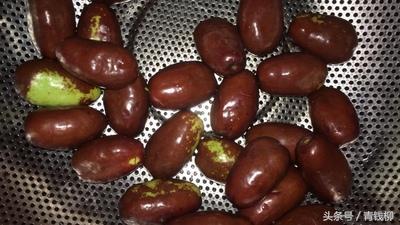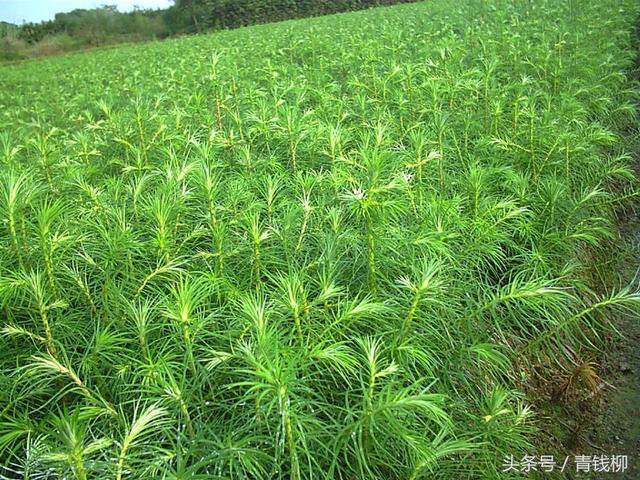Management Technology of Full-fruiting Period of Long Jujube in Lingwu

Management techniques of Lingwu Changzao jujube in full fruit period
Lingwu long jujube fruit color, meat thick, crisp, sweet and sour palatable, unique flavor, rich in various minerals and vitamins. Since Lingwu City successfully introduced Lingwu jujube in solar greenhouse in 2008, through the joint efforts of the local government and people, Lingwu Changzao has become a large-scale regional characteristic industry in Lingwu City. In recent years, with the facility Lingwu long jujube entering the full fruit period, the facility management technology is becoming more and more perfect. In order to improve the quality of Lingwu Changzao jujube and ensure the healthy and sustainable development of Lingwu Changzao jujube industry, this paper takes the Lingwu Changzao jujube greenhouse in the thousand mu facility horticulture base of Lingwu City as an example, through the continuous observation of the fruit phenological period in recent years, summed up the management technology of Lingwu Changzao jujube fruit.
1 cold dormancy period
1.1 time
When the temperature drops to about 5 ℃ from the end of September to the beginning of October every year, the buckle shed will gather cold and dormancy.
1.2 Management technology
1.2.1 applying base fertilizer. Base fertilizer is applied every year from jujube fruit harvest to autumn before winter irrigation, the earlier the fertilization time, the better. It can increase the application of fully mature sheep manure organic fertilizer 75 t/hm 2 and compound fertilizer 0.25 kg/ plant.
1.2.2 pest control. Spraying 5 °B é stone-sulfur mixture can reduce the overwintering base of diseases and pests and lay a good foundation for prevention and control in the coming year.
1.2.3 irrigate winter water. The soil is fully irrigated with winter water before freezing.
(2) the budding stage
2.1 time
According to the listing time of Lingwu long jujube, it is inferred that the time for warming up in the greenhouse is the most suitable at the end of November. If there is no cloudy, rainy and snowy weather, the hydrothermal conditions in the greenhouse are better, and the seedlings can sprout about 30 days after heating, that is, they can sprout at the end of December.
2.2 Management technology
2.2.1 heating up. Every day, the sun rises before and after sunrise to warm up, and the sun warms up before sunset. If you want to keep warm in cloudy and snowy weather, you can delay the early release of sunrise, keep the daytime temperature between 15: 18 ℃ and 5: 8 ℃ as far as possible.
2.2.2 pruning. After heating up, the shaping and pruning work should be carried out as soon as possible, and the technical measures such as fixed trunk, sprouting, heavy truncation, truncation and retraction should be used to control the growth of crown and height and distribute branches reasonably, so as to promote the germination of new branches in the lower part of jujube while bearing fruit, and lay a good foundation for prolonging the life span of jujube fruit and balancing the tree potential.
2.2.3 Water and fertilizer management. Ploughing the soil in time after thawing to loosen the soil to promote root growth and improve absorptive capacity. Topdressing in time before jujube sprouting, mainly nitrogen fertilizer to promote flower bud differentiation. At the same time, watering sprouting water can ensure the early growth rate of jujube and promote the neat germination and floral organ development. In addition, attention should be paid to timely ploughing after watering to prevent soil consolidation.
2.2.4 Disease and pest control. After the completion of tree shaping and pruning, spraying 2 °B é stone sulfur mixture and 5 °B é stone sulfur mixture 7 days before germination can prevent many kinds of diseases and insect pests.
(3) the stage of branch and leaf expansion
3.1 time
From early January to early February.
3.2 Management Technology
3.2.1 temperature and humidity management. During the period of branch and leaf development, the daytime temperature is controlled between 18-25 ℃, the night temperature is between 10-15 ℃, and the relative humidity is 50%-60%.
3.2.2 Water and fertilizer management. In the greenhouse with better soil conditions, the jujube greenhouse should be fertilized and watered in time 20-30 days after sprouting, urea, diammonium phosphate and compound fertilizer could be applied in the later stage of branch and leaf expansion, and foliar fertilizer should be sprayed every 15 days after the formation of leaf canopy.
3.2.3 Tree management. By wiping buds, coring, twisting, supporting branches, pulling branches, carving buds, thinning branches, removing tillers and other technical measures to ease jujube growth potential, concentrate nutrients and improve tree scenery conditions, so as to strengthen the fruiting branch group, increase the number of jujube strands and increase the fruit setting rate.
3.2.4 Disease and pest control. Spraying chlorpyrifos 1 000 times or 2.5% chlorpyrifos 3 000 times to control jujube gall midge or jujube armyworm larvae.
4 flowering and fruiting period
4.1 time
From the middle of February to the first ten days of March.
4.2 Management Technology
4.2.1 temperature and humidity control. The day temperature is 20: 28 ℃ and night temperature is 15: 20 ℃ at early flowering stage, and the day temperature is 25: 35 ℃ and night temperature is 15: 20 ℃ at full flowering and fruiting stage. The relative humidity at flowering stage is 70%-85%.
4.2.2 Water and fertilizer management. Urea 300 kg/hm 2 was applied before flowering, and water was irrigated in time and soil was ploughed in order to meet the water demand at flowering stage and avoid the consumption of nutrients by weeds.
4.2.3 Tree management. The buds were wiped many times and the redundant primary branches were removed, and the hearts of the secondary branches were removed in time when the primary branches grew out of 7 or 10 secondary branches, and then the secondary branches were coring again 10 days later.
4.2.4 Disease and pest control. The main pest before and after flowering is jujube gall midge, which can be controlled by the combination of biological control and chemical control. The main disease is yellow leaf disease, which can be controlled by spraying the mixture of 300 times of Haizela liquid and 800 times of amino acid liquid fertilizer, once every 15 days for 2 or 3 times.
4.2.5 Flower and fruit management. When the humidity in the shed is high, it can be ventilated and dehumidified, and the soil and air humidity can be reduced by timely ventilation and loosening soil after watering. The air humidity required by florescence is relatively large, which must be strictly controlled, otherwise it is easy to appear "scorched flower" phenomenon. The method of flooding irrigation on the film can be used to increase the air humidity in the flowering stage, and the method of spraying water can be used to increase the air humidity when there is no plastic film. It can be sprayed 2 times in general years and 3 times in severe drought years. Water spraying should be combined with the application of fertilizers and growth regulators, 0.2% urea should be sprayed before flowering, 0.2% potassium dihydrogen phosphate should be sprayed during flowering, supplemented by calcium fertilizer, iron fertilizer and other micro-fertilizers. In addition, 0.3% borax spray at flowering stage can promote pollen tube germination and increase fruit setting rate.
(5) from swelling to white ripening stage
5.1 time
From mid-March to early May.
5.2 Management Technology
5.2.1 temperature and humidity control. During the young fruit expansion period, the temperature is 2832 ℃, the relative humidity is 60% and 70%, and in the white ripening period, the temperature is 30% 33 ℃, and the relative humidity is 40% 50%.
5.2.2 Water and fertilizer management. During the growth period of young fruit, topdressing should pay attention to the combination of nitrogen, phosphorus and potassium. The application rate of ternary compound fertilizer is 300,375 kg/hm 2. After fertilization, the field capacity is kept above 70%, and weeds are ploughed and weeded according to soil moisture after irrigation. In the white ripening period, mid-tillage should be strengthened to prevent excessive field capacity.
5.2.3 Tree management. For the reserved unplucked primary branch, pick the heart in time, pick the heart at 6 or 8 times of the secondary branch, pick the heart of the lignified jujube crane for 40 cm, and wipe off the second jujube head in time.
5.2.4 Disease and pest control. In this stage, the control of heart borer, tortoise shell wax scale and red spider should be strengthened. 1 000 times of imidacloprid and 1 500 times of dacloprid were sprayed continuously for 2 times for 3 times with an interval of 15 days.
5.2.5 jujube fruit management. Strictly control the water supply in the field to prevent the occurrence of cracking and rotten fruit; at the same time, it is necessary to strengthen microclimate control and management to prevent sunburn and gas burning of jujube fruit.
(6) mature picking period
6.1 time
From mid-May to early-mid-June.
6.2 Management Technology
First, water and fertilizer management, do a good job in water control, weeding, ploughing and loosening soil. The second is the prevention and control of rats and ants. Wheat bran mixed with phoxim can be sprinkled under the tree plate. Third, jujube fruit harvest. The method of harvesting in stages and in batches should be harvested in the crisp ripening period of jujube fruit in order to improve the fruit quality.
7 reflux and defoliation period
7.1 Tim
About 7 days after picking, the leaves began to turn dark and gray, and the leaves fell about 15 days after picking.
7.2 Management technology
7.2.1 remove the membrane. The greenhouse film of jujube fruit should be removed gradually from ripening to picking, adapt to the external environment slowly, and be removed within 7 days after picking.
7.2.2 continuous spraying of urea. After the jujube fruit was harvested, 0.5% urea solution was sprayed twice (10 days apart) to promote the reflux of nutrients in jujube leaves.
- Prev

Application and Popularization of Chemical Weed Control techniques in Seedling raising of Cunninghamia lanceolata
Application and Popularization of Chemical Weed Control techniques in Seedling raising of Cunninghamia lanceolata; gymnosperms of Cunninghamia lanceolata, Cunninghamia lanceolata and evergreen trees have a long history of cultivation, fast growth, good quality, straight wood texture, uniform structure, non-warping and non-cracking.
- Next

Efficient planting techniques of fresh Sweet waxy Corn in North China
High efficient planting techniques of fresh sweet and waxy corn in northern areas 1 selection of improved varieties, isolated cultivation of sweet and waxy corn varieties should have the characteristics of moderate sweet and waxy, pure flavor, tender texture, rich nutrition, good appearance and so on. Because sweet waxy corn and ordinary corn.
Related
- Wuhan Hospital Iron Tree Blooming Result Was Instantly Frightened by the Gardener Master
- Which variety of camellia is the most fragrant and best? Which one do you like best?
- What is the small blue coat, the breeding methods and matters needing attention of the succulent plant
- Dormancy time and maintenance management of succulent plants during dormancy
- Minas succulent how to raise, Minas succulent plant pictures
- What are the varieties of winter succulent plants
- How to raise succulent plants in twelve rolls? let's take a look at some experience of breeding twelve rolls.
- Attention should be paid to water control for succulent plants during dormant period (winter and summer)
- Watering experience of twelve rolls of succulent plants
- Techniques for fertilizing succulent plants. An article will let you know how to fertilize succulent plants.

